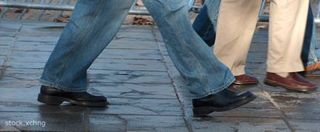'Shoe Radar' to Help You Find Your Way

Researchers have developed a shoe-embedded radar system to help people who are lost but are not without luck – or footwear – find their way back to the familiar.
The prevalence of global positioning system (GPS) devices in everything from cars to cell phones has made getting lost almost a thing of the past, but GPS systems can fail or not work in certain circumstances.
"There are situations where GPS is unavailable, such as when you're in a building, underground or in places where a satellite connection can be blocked by tall buildings or other objects," said Dan Stancil, a professor at North Carolina State University and co-author of a paper describing the research in the IEEE Transactions On Microwave Theory And Techniques.
One solution is to use inertial measurement units (IMUs), which are electronic devices that measure the forces created by acceleration (and deceleration) to determine how quickly you are moving and how far you have moved.
The technology works in conjunction with GPS, with the IMU tracking your movement after you lose a GPS signal – and ultimately providing you with location data relevant to your last known location via GPS.
For example, if you entered a cave and lost your GPS signal, you could use the IMU to retrace your steps to the last known GPS location and find your way back out.
However, IMUs have traditionally faced a significant challenge. Any minor errors an IMU makes in measuring acceleration lead to errors in estimating velocity and position – and those errors accumulate over time.
Sign up for the Live Science daily newsletter now
Get the world’s most fascinating discoveries delivered straight to your inbox.
If an IMU thinks you are moving – even as little as four inches (10 centimeters) per second – when you are actually standing still, within three minutes the IMU will have moved you 59 feet (18 meters) away from your actual position.
But, "if you had an independent way of knowing when your velocity is zero," Stancil said, one could significantly reduce this sort of error.
Enter the shoe radar.
The portable radar sensor prototype attaches to a shoe, Stancil explained, and links up with a small navigation computer that tracks the distance between one's heel and the ground.
"If that distance doesn't change within a given period of time, the navigation computer knows that your foot is stationary," Stancil said.
That could mean that a person is standing still, or it could signal the natural pause that occurs between steps when someone is walking. Either way, Stancil said, "by resetting the velocity to zero during these pauses, or intervals, the accumulated error can be greatly reduced."
• Nike Patents Plan for Self-Lacing Shoes • Bad Directions from Google Maps Lead to Lawsuit • 7 Ordinary Things Turned Hi-Tech
